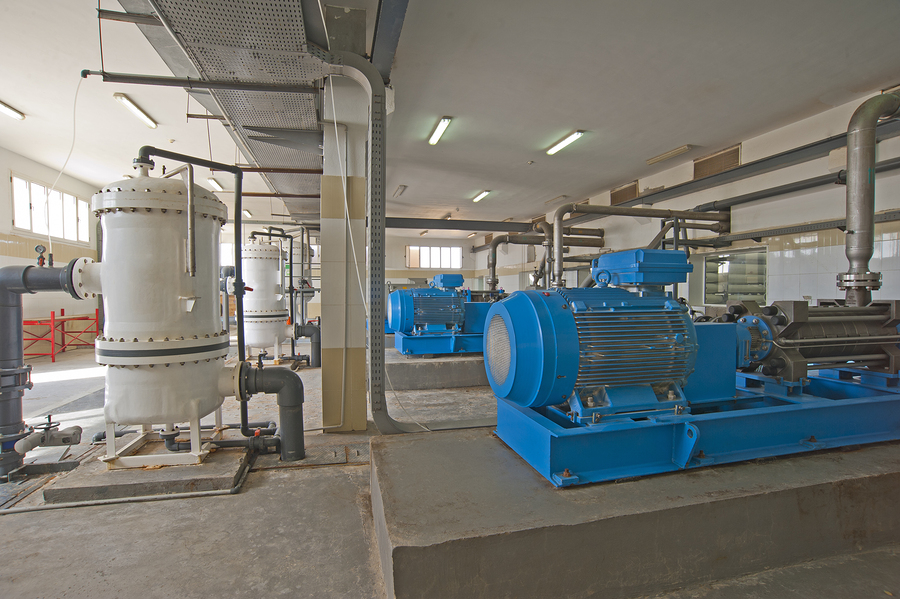Not only do we have a full line of submersible pumps, vacuum pumps, and water pumps for all residential applications, we also have access to large, powerful, high volume commercial pumps which can move huge quantities of water or waste water. This post is about the larger pumps that it takes to move seawater through diaphragms to provide drinking water.
 Approximately 71% of the earth is covered by ocean and sea: in other words, salt water. We live on the remaining 29%, and we need fresh water to sustain human life. According to the World Health Organisation (WHO), over one billion people currently do not have enough fresh water. By 2050, that number could increase to as many as four billion.
Approximately 71% of the earth is covered by ocean and sea: in other words, salt water. We live on the remaining 29%, and we need fresh water to sustain human life. According to the World Health Organisation (WHO), over one billion people currently do not have enough fresh water. By 2050, that number could increase to as many as four billion.
The only way those four billion people are going to have enough water is through seawater desalination. Roughly 60% of the world’s population lives within 60 kilometres of a sea coast. In those regions, desalinated seawater will become the norm, as it will make more sense for those further inland to drink from freshwater sources.
By 2020, world population is projected to be as high as 7.5 billion. Other factors expected to have significant impact upon water usage include: urbanisation, drought, proximity to sea water, saline innovation into freshwater, and agricultural irrigation. In 2000, it cost approximately $2 billion to desalinate seawater for use as drinking water. By 2020, that number is expected to run as high as $18 billion.
According to research, we have been desalinating seawater for as long as 2000 years. In more recent times, it has been used on ships to provide drinking water, especially during the 19th century, when ships helped shape society.
So, how does seawater desalination work? It is done by reverse osmosis; when reverse osmosis is used to desalinate seawater, it is called seawater reverse osmosis, abbreviated as “SWRO.” Osmosis is roughly defined as a process by which a solute, which would be salt in this case, moves through a membrane into fluid, which would be water in this case, until the ratios of solute to solvent are equal. Standard osmosis would create two solutions which have equal ratios of solute to solvent.
In SWRO or any reverse osmosis, the process is reversed, creating one solution with no solute and one which retains all of the solute. Seawater is first fed through a low pressure, pre-treatment filtering system which is assigned to remove suspended solids from the water. Next, the water is pressurised and pumped with a pressure of 60 bar to 82.5 bar through a sequence of reverse osmosis membranes which are semipermeable.
The pressure from the pump forces the water to flow through the membrane in a reverse fashion, from the high solute concentrate to the low solute concentrate. The end result is that the salt and other solids are left behind, and freshwater comes out on the other end. Reverse osmosis is also used in standard water purification, with sophisticated filters that block not only salt, but bacteria, viruses, and other pollutants from contaminating the water at the end of the process.
SWRO is expected to become the linchpin of the seawater desalination industry because it uses less energy and resources than other methods, such as multi-effect distillation and multi-stage flash. These processes use heat energy to boil seawater, thus producing steam. The steam is then converted back to water in a cooling tank, leaving impurities behind. This method requires much more energy than SWRO, which has an end result of costing the consumer more money.
To give you an idea of some of the quantities of water currently being desalinated, the Changi NEWater Plant in Singapore is a good example. It pumps up to 136,000 m3 of water per day. A second plant is under construction, and will eventually have a capacity of 318,500 m3 of water per day. This technology is currently being used in virtually every major Asian, American, and European country.
So, what does this mean to us in Australia? First of all, it means that by the time we start getting serious, the technology will have evolved even further. But we are going to have to embrace it eventually, because our population is increasing every year, and our climate seems to be getting hotter and drier every year.
Eventually, it’ll make more sense for those of us who live close to shore to use desalinated seawater and leave the freshwater for the environment, and those who live inland. It makes a lot more sense mathematically; we have no idea how to calculate how much seawater currently exists, but it looks almost infinite in comparison to our freshwater resources.
